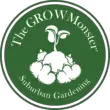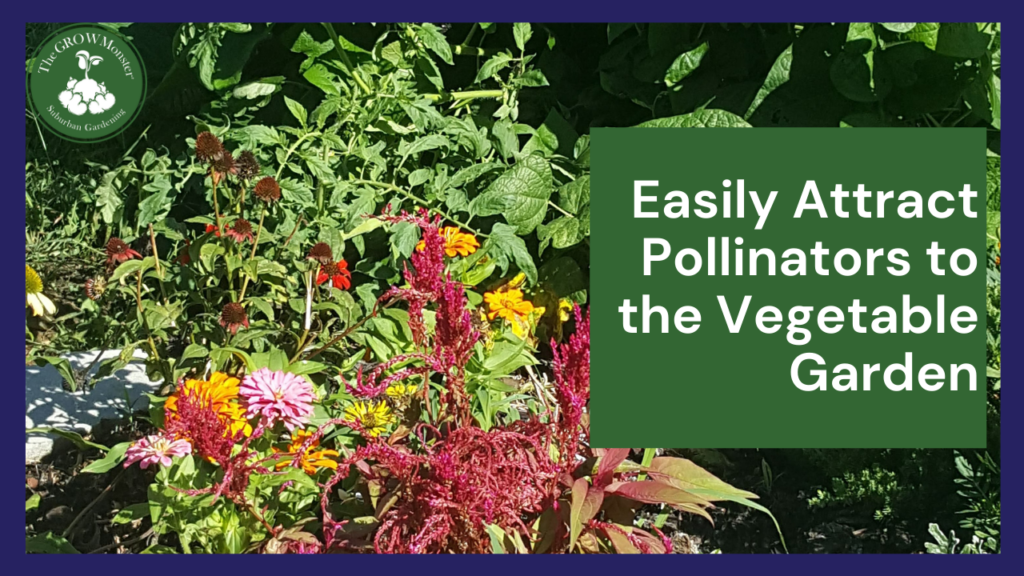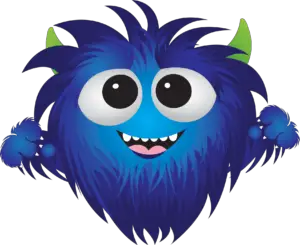In this continuation of our Pollinator Week series, I want to focus specifically on how to attract pollinators to the vegetable garden. At The Grow Monster, we are committed to helping the suburban gardener and part of that mission is helping you with your suburban garden experience. Attracting pollinators to your vegetable garden will help you grow more produce and give you enjoyment from seeing all these beautiful creatures.
To attract pollinators to the vegetable garden, you need to plant flowers they like and provide spaces for them to rest and nest. For example, Dill is a great host plant for native swallowtails and an added benefit is that it is also a great companion plant to cucumbers and tomatoes. Hummingbirds love Petunias and they are great companion plants for brassicas, tomatoes, and peppers.
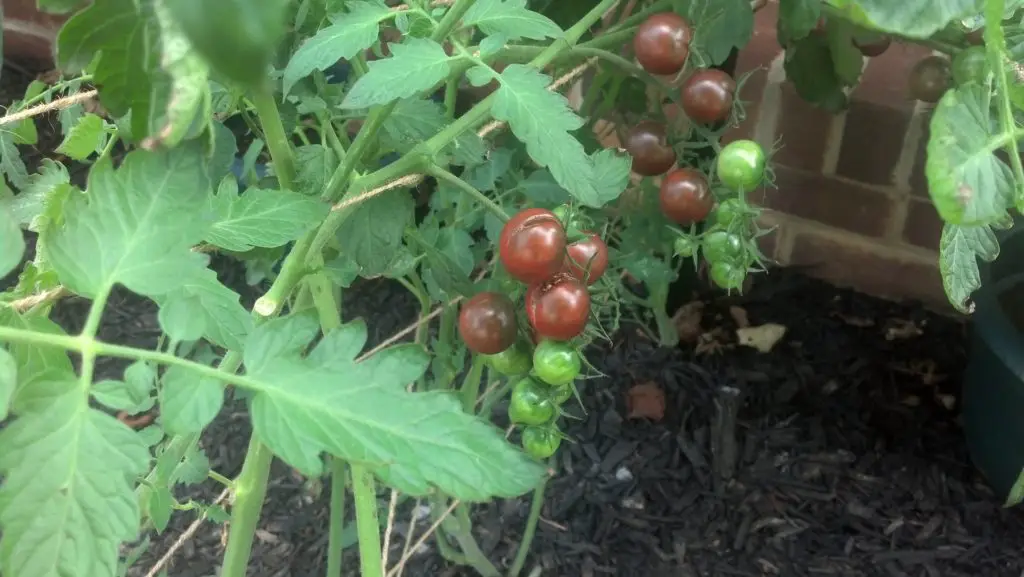
Why Do You Need Pollinators in the Vegetable Garden?
You need pollinators in the vegetable garden to help certain plants create produce. Some plants, like peppers, are self-pollinating. This means that they don’t need any assistance, except maybe a slight wind, to get the pollen from one flower to another. Some plants need assistance, so we want to make sure we are attracting the pollinators that will aid them. There are many types of pollinators, as I mentioned previously in this post.
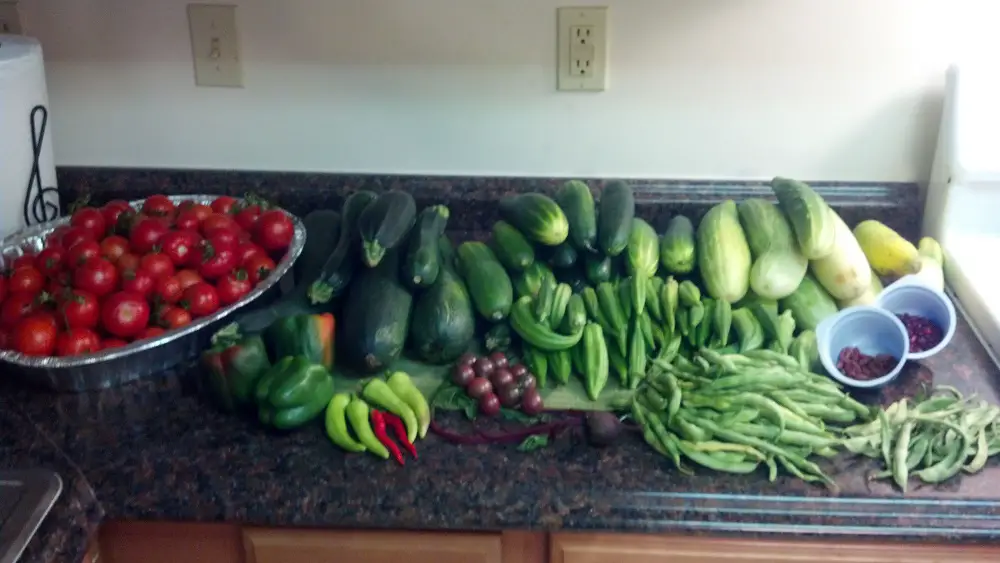
Sometimes, I see people post a photo of their garden and say that they aren’t getting any produce. As soon as I look at the photo it is easy to see why. The person planted a bunch of brassicas (which do not need pollinators for a harvest) with a few plants that do need pollinators to create produce. If you plant a squash and let it creep along the ground, the leaves may grow so large that the flowers are not as noticeable even though they are bright yellow! The local pollinators might pass on by that area of your garden and you would then be scratching your head as to why your squash didn’t produce this year. Because of squash, cucumber, and plants like this we will need to make sure to attract pollinators in the vegetable garden.
Which Pollinators are Beneficial to the Vegetable Garden?
To determine which pollinators are beneficial to the vegetable garden, first look at the plants you want to grow. Some pollinators are attracted to one type of plant verses another. Once you have a list of the vegetable plants and which pollinators you need to attract you can then start to make your garden more pollinator friendly. Keep in mind about one third of human food crops require pollinators.
Here’s an example list of plants to attract pollinators to the vegetable garden I made that you can use in a small planter or multiply over a larger bed:
- Sunflowers- The large yellow heads will attract bees, there are the tall varieties we all recognize and also some shorter 2 foot tall varieties for smaller spaces.
- Coneflowers- Bees love coneflowers, as do many species of butterflies. Coneflowers (also known as Echinacea) have the added benefit of being used in some herbal remedies as well.
- Strawberries- As the bees and butterflies are attracted to the larger sunflowers and coneflowers, they will fly from flower to flower and eventually from plant to plant helping pollinate your strawberry plants.
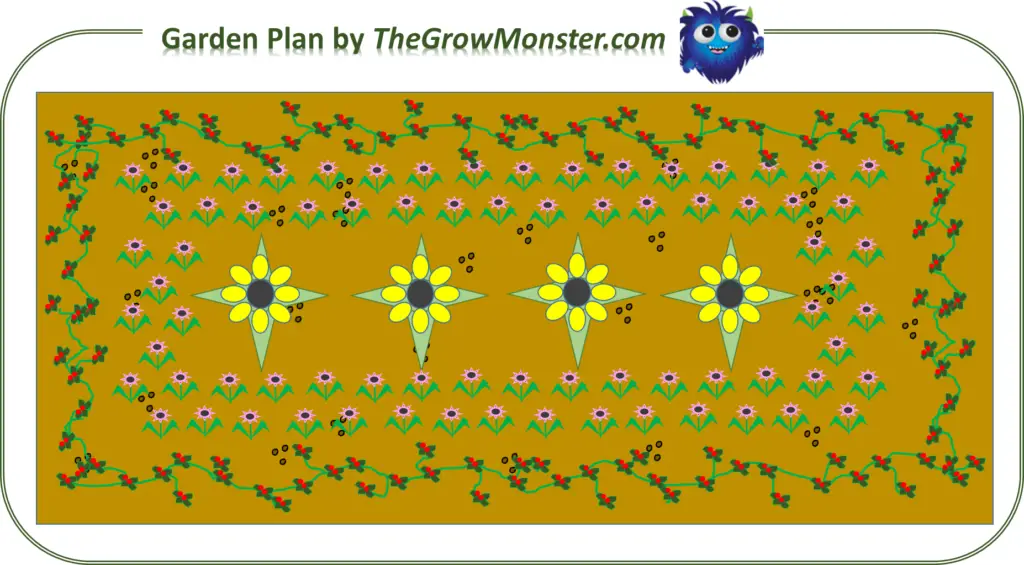
The Sunflowers can be planted directly in the middle of the bed with Coneflowers surrounding them and the Strawberries on the outskirts. This will create an aesthetically pleasing area that you can enjoy while also being a productive area of your garden. The added benefit is that since those pollinators are now in your garden area they will also fly from bed to bed pollinating the flowers.
What Plants Will Attract Pollinators to the Vegetable Garden?
As you can see from the sample garden I posted above, certain plants will attract pollinators to the vegetable garden. Sometimes the shape of the flower or color will determine what pollinators are attracted, other times there may be a certain smell that attracts the pollinators. Here is a handy list of some pollinator friendly plants you might consider to help attract pollinators to the vegetable garden. Keep in mind that if you are trying to attract pollinators you cannot use chemical pesticides or anything that will harm the pollinators otherwise your effort will not work.
Another thing to consider when attracting pollinators is what their other needs are- what do their caterpillar need to eat, do they need shade or shelter, and do the pollinators need a water source? Planning your garden around the pollinator needs will help make you a much more effective gardener.
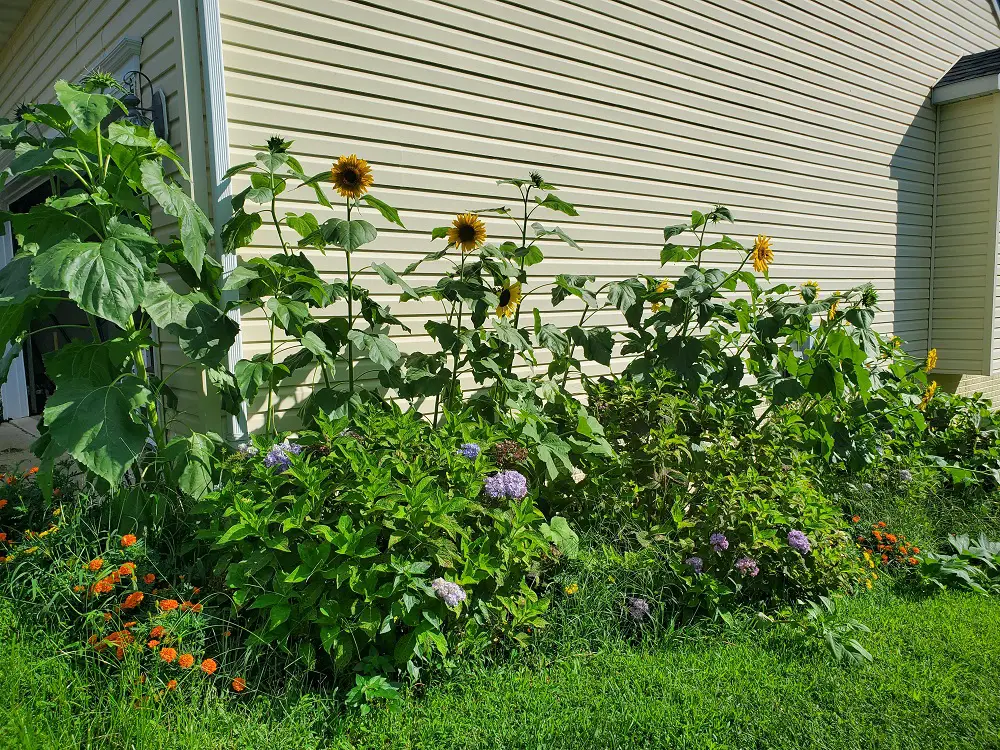
For example, the Hydrangea plant has long stems with large fragrant flower balls. Mason Bees need hollow stems in order to lay their eggs, place some pollen and nectar, and then seal the end with mud. While we may not eat the Hydrangea it will attract the Mason Bees that will then start pollinating the vegetable plants in the area. You might notice in the fall as the flowers fall back that the long stems begin to have little “holes” drilled in them. These are the Mason Bee nests!
If you’d like some examples and factors to consider in creating a pollinator friendly garden, check out this post I wrote listing out what should be in a pollinator garden. Once you start planning out your garden, it will become much more obvious to you which additional flowers you might need. Take some time to walk your neighborhood and see what pollinators are on which plants, then incorporate those plants in to your own garden.
Here is an example of a larger garden bed you can create to attract pollinators to the vegetable garden:
- You can plant some apple trees- these can be dwarf or full grown depending on your gardening space.
- Plant Lavender around the garden space, whether in containers or directly in the ground, to help attract mason bees and repel apple tree pests.
- Create large pots of herbs like dill, fennel, and coriander which will attract butterflies and birds to your apple trees. Mason bees are the most efficient bees for pollinating apple trees, you need far fewer per apple tree than honeybees.
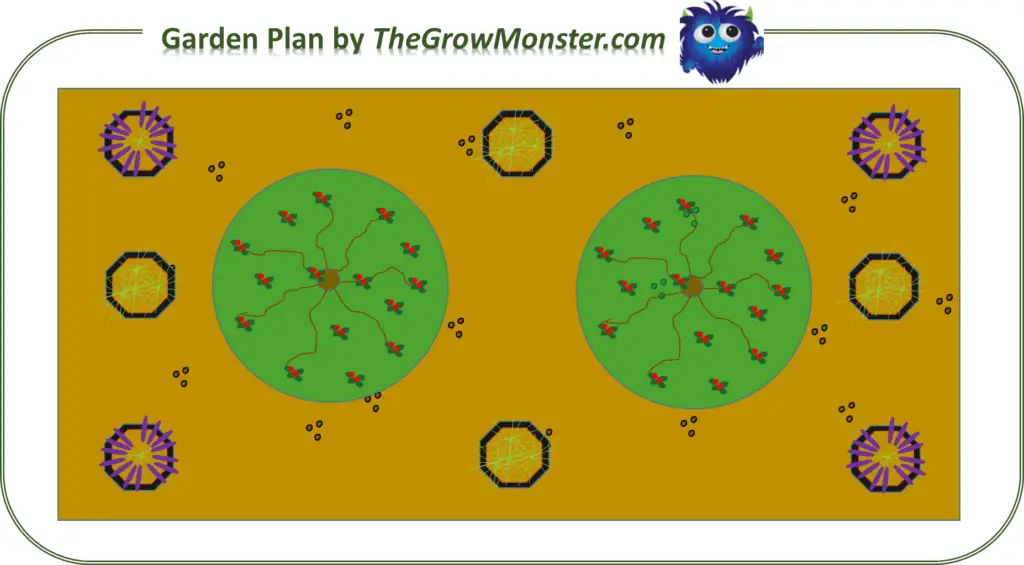
Companion Planting to Attract Pollinators
When considering the plants that you will use to attract pollinators to the vegetable garden, also consider plants you might not otherwise have but are beneficial in other ways. Companion planting is putting plants together that compliment each other in some way– whether they repel each other’s pests, attract beneficial animals to each other, or are beneficial to the flavor of the produce or some other benefit.
Monarch butterflies need to lay their eggs on milkweed plants. Depending on your area, different types of species are most easily grown. Humans do not eat milkweed, in fact it can be toxic and poisonous to us. But, consider planting milkweed near or in your garden to compliment the flowers that the Monarchs are attracted to for nectar. Isn’t it easier to keep Monarchs in your garden if they are able to complete their lifecycle there? The Monarchs will have a place to lay eggs, caterpillars able to feed on the milkweed (don’t forget about spaces for the chrysalis!), and then the adult butterflies able to find nectar.
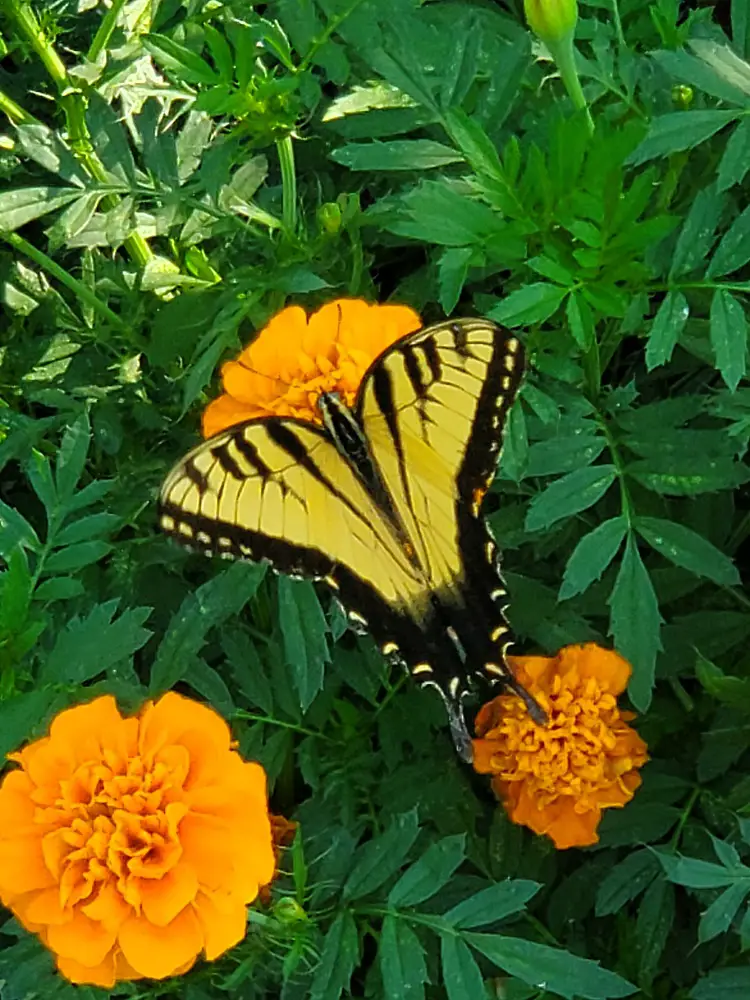
One of the best companion plant to use in the garden is Marigolds. They are bright, fragrant flowers that attract many pollinators. You can create a border around your garden with them and intersperse a few other flowers to create variation in color. At The Grow Monster, we like planting Nasturtiums every so often in our Marigold border. The Nasturtiums are great at attracting hummingbirds and are also edible (the whole plant can be eaten and the leaves taste peppery). You can see a companion planting list from Burpee, but it’s always good to do your own observations and keep a gardening journal to see what works best in your area.
Final Thoughts
No matter what type or size of garden space you have, you will need to consider attracting pollinators. Your vegetable garden will be more productive when you plan additional plants for the pollinators. Plants like Hydrangea, milkweed, and other flowers may not be edible but they will help attract pollinators to the vegetable garden. Another benefit is that these gardens are much more beautiful and full of interest due to the various textures, heights, and colors that other plants and pollinator spaces will add.
The Grow Monster hopes you are enjoying our Pollinator Week Series. If you are not familiar with Pollinator Week, start here. If you need help creating your pollinator garden, read this post. For a list of pollinator friendly plants, check out this post. And if you are concerned with promoting native pollinators, read on here.
